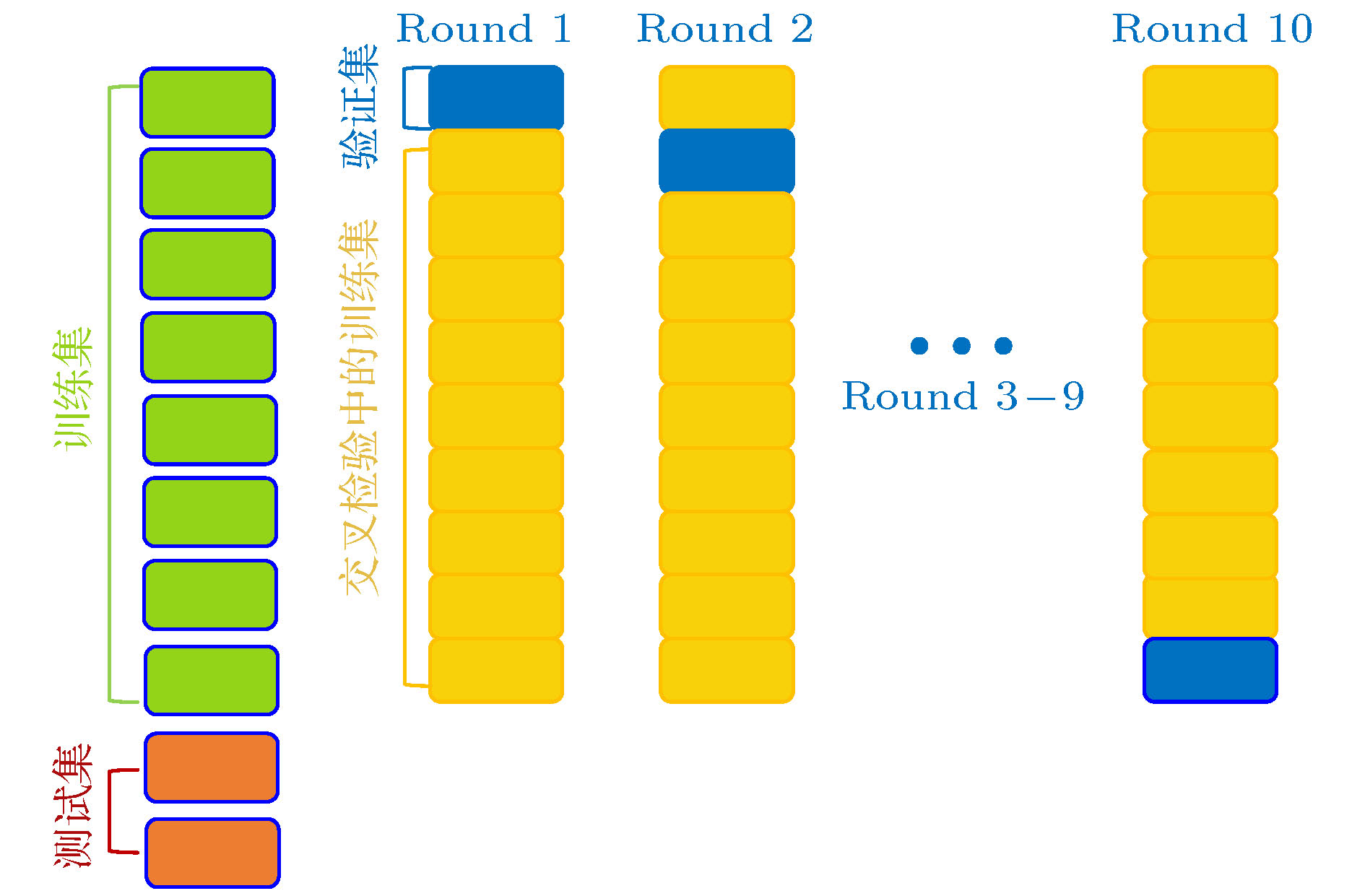-
混杂复合材料是一种新型复合材料, 其复杂的细观结构导致预测其等效热传导性能极富挑战性. 本文结合渐近均匀化方法、小波变换方法和机器学习方法发展了一种新的可以有效预测混杂复合材料等效热传导性能的小波-机器学习混合方法. 该方法主要包括离线多尺度建模和在线机器学习两部分. 首先借助渐近均匀化方法通过离线多尺度建模建立了混杂复合材料的热传导性能材料数据库, 然后利用小波变换方法对离线的材料数据库进行预处理, 接下来分别运用人工神经网络和支持向量回归方法建立混杂复合材料等效热传导性能预测的在线机器学习模型. 最后通过对周期和随机混杂复合材料进行数值实验, 验证了小波-机器学习混合方法的有效性, 数值实验结果表明小波-神经网络混合方法具有最优的预测效果和抗噪能力. 此外, 需要强调的是对于具有高维大规模数据特征的随机混杂复合材料, 小波-机器学习混合方法不仅可以提取离线材料数据库的重要特征, 还可以显著减少在线监督学习的输入数据规模并提高机器学习模型的训练效率及抗噪性能. 本文建立的小波-机器学习混合方法不仅适用于混杂复合材料等效热传导性能的预测, 还可进一步推广应用于复合材料等效物理、力学性能的预测.The hybrid composite materials are a new type of composite material. Due to their complex microscopic structures, it is very challenging to predict the equivalent thermal conductivities of hybrid composites. In this paper, an innovative hybrid wavelet-based learning method assisted multiscale analysis is developed to predict the effective thermal conductivities of hybrid composite materials with heterogeneous conductivity by the asymptotic homogenization method, wavelet transform method, and machine learning method. This innovative approach mainly includes two parts: off-line multi-scale modeling and on-line machine learning. Firstly, the material database about thermal transfer performance of hybrid composites is established by the asymptotic homogenization method and off-line multi-scale modeling, and then the off-line material database is preprocessed by the wavelet transform method. Secondly, the artificial neural network and support vector regression method are employed to establish the on-line machine learning model for predicting the equivalent heat conduction properties of hybrid composites. Finally, the effectiveness of the proposed hybrid wavelet-based learning method is verified by numerical experiments on the periodic and random hybrid composites. The numerical results show that the hybrid wavelet-based artificial neural network method owns the optimal capability of parameter prediction and anti-noise. Furthermore, it should be emphasized that the hybrid wavelet-based learning method can not only extract the important features of off-line material database for random hybrid composites with high-dimensional large-scale data features, but also significantly reduce the quantity of input data for ensuring the successful on-line supervised learning and improve the training efficiency and anti-noise performance of the machine learning model. The established hybrid wavelet-based learning method in this paper can not only be used to evaluate the equivalent thermal conductivities of hybrid composite materials, but also further extend to the predicting of the equivalent physical and mechanical properties of composite materials.
-
Keywords:
- hybrid composite materials/
- effective thermal conductivities/
- machine learning method/
- wavelet transform
[1] [2] [3] [4] [5] [6] [7] [8] [9] [10] [11] [12] [13] [14] [15] [16] [17] [18] [19] [20] [21] [22] [23] [24] [25] [26] [27] [28] [29] [30] -
样本编号 数据特征 数据标签 样本1 $kc_1$ $kc_2$ $km$ $r_1$ $r_2$ $\widehat k$ $\cdots$ $\cdots$ $\cdots$ $\cdots$ $\cdots$ $\cdots$ $\cdots$ 样本n $kc_1$ $kc_2$ $km$ $r_1$ $r_2$ $\widehat k$ 样本编号 数据特征 数据标签 样本1 $k^1_{x_1 x_2}$ $k^2_{x_1 x_2}$ $\cdots$ $k^m_{x_1 x_2}$ $\widehat k$ $\cdots$ $\cdots$ $\cdots$ $\cdots$ $\cdots$ $\cdots$ 样本n $k^1_{x_1 x_2}$ $k^2_{x_1 x_2}$ $\cdots$ $k^m_{x_1 x_2}$ $\widehat k$ 样本编号 数据特征 数据标签 样本1 $CA_3$ $\widehat k$ $\cdots$ $\cdots$ $\cdots$ 样本n $CA_3$ $\widehat k$ 方法 模型参数 Cv训练误差 Cv验证误差 训练误差 测试误差 训练时间/s 测试时间/s ANN 1250-1024-512-512-256-1 1.708% 5.760% 1.360% 3.973% 100.345 0.061 ANN-I 1250-1024-512-512-256-1 1.516% 5.948% 1.671% 4.496% 100.517 0.089 ANN-II 1250-1024-512-512-256-1 1.349% 5.404% 1.683% 4.427% 101.160 0.071 ANN-III 1250-1024-512-512-256-1 1.550% 5.862% 1.285% 4.810% 100.270 0.059 SVR C= 1和$\varepsilon=10^{-2}$ 2.658% 9.257% 2.664% 8.156% 0.780 0.171 SVR-I C= 1和$\varepsilon=10^{-2}$ 2.664% 9.268% 2.660% 8.160% 0.710 0.187 SVR-II C= 1和$\varepsilon=10^{-2}$ 2.659% 9.265% 2.673% 8.150% 0.696 0.159 SVR-III C= 1和$\varepsilon=10^{-2}$ 2.677% 9.124% 2.675% 8.099% 0.694 0.166 -
[1] [2] [3] [4] [5] [6] [7] [8] [9] [10] [11] [12] [13] [14] [15] [16] [17] [18] [19] [20] [21] [22] [23] [24] [25] [26] [27] [28] [29] [30]
计量
- 文章访问数:5950
- PDF下载量:137
- 被引次数:0














 下载:
下载:








